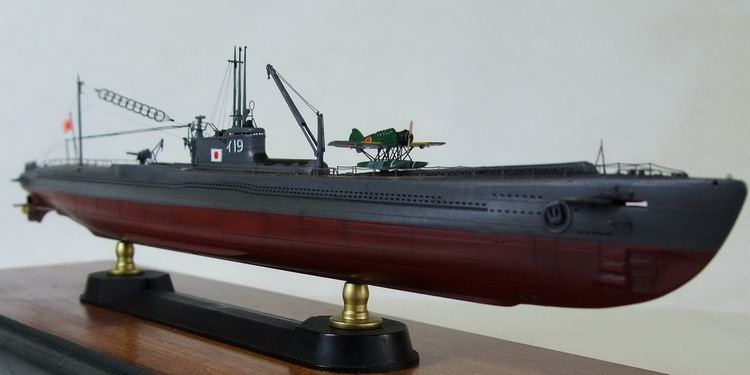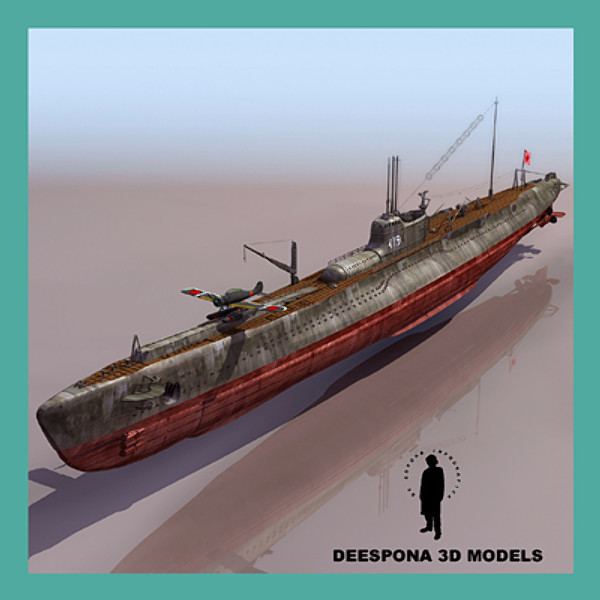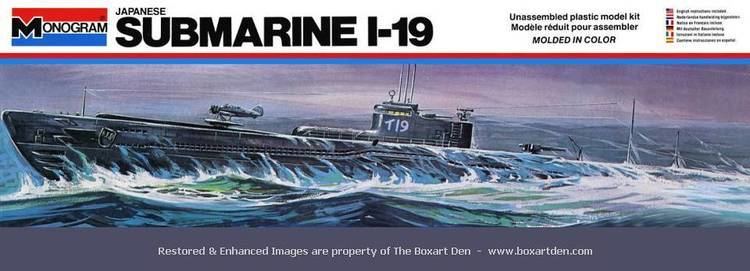Name I-19 Completed April 28, 1941 Launched 16 September 1939 Draft 5.14 m | Laid down March 1938 Struck April 1, 1944 Construction started March 1938 Length 109 m Beam 10 m | |
 | ||
Fate Depth charged and sunk November 25, 1943 by USS Radford. Builder | ||
I-19 was a Japanese Type B1 submarine which damaged and destroyed several enemy ships during World War II while serving in the Imperial Japanese Navy. During the Guadalcanal Campaign, with a single torpedo salvo, the submarine sank the aircraft carrier USS Wasp and the destroyer USS O'Brien, and damaged the battleship USS North Carolina.
Contents

Operation K-1

On February 23, 1942, I-19's Yokosuka E14Y (Glen) floatplane made a night reconnaissance over Pearl Harbor, Hawaii in preparation for Operation K-1, the second attack on Pearl Harbor by the Imperial Japanese Navy. On March 4, she arrived at the French Frigate Shoals to serve as a radio beacon for the Kawanishi H8K (Emily) flying boats that were to attack Pearl Harbor but did not otherwise participate in the attack, which was carried out effectually by two of the planned five H8Ks.
Sinking of USS Wasp and USS O'Brien

On September 15, 1942, while patrolling south of the Solomon Islands during the Guadalcanal Campaign under the command of Commander Narahara Shogo, I-19 sighted and attacked the U.S. carrier Wasp, firing six torpedoes.

Captain Tameichi Hara claims to have received word while anchored at Chuuk to the effect that Lt Cmdr Takaichi Kinashi was skipper of I-19.
Three of the torpedoes hit USS Wasp, causing heavy damage. With power knocked out due to damage from the torpedo explosions, USS Wasp’s damage-control teams were unable to contain the ensuing fires, she was abandoned and scuttled.

The remaining three torpedoes from the same spread (torpedo salvo), often incorrectly attributed to a second Japanese submarine, hit the U.S. battleship North Carolina and the destroyer O'Brien, the latter of which later sank en route for repairs on October 19, 1942. Significant damage had been sustained by North Carolina, which underwent repairs at Pearl Harbor until November 16, 1942.
This single torpedo salvo thus sank an aircraft carrier and a destroyer, and severely damaged a battleship, making it one of the most damaging torpedo salvos in history.
"Tokyo Express"
From November, 1942, until February, 1943, I-19 assisted with the nocturnal supply and reinforcement deliveries, and later, evacuations for Japanese forces on Guadalcanal. These missions were labeled the "Tokyo Express" by Allied forces.
Fiji
Between April and September, 1943, I-19 was stationed off Fiji. During this time, the submarine sank two Allied cargo ships and heavily damaged one. After sinking one of the ships— SS William K. Vanderbilt— on May 16, 1943, I-19 surfaced and machine-gunned the surviving crew members in their lifeboats, killing one of them.
Loss
On November 25, 1943, at 20:49, 50 nautical miles (93 km) west of Makin Island, destroyer USS Radford detected I-19 on the surface with radar. After I-19 submerged, Radford attacked her with depth charges. I-19 was lost with all hands in this attack.
I-19 in fiction
I-19 was the number of the submarine commanded by Toshiro Mifune in the Steven Spielberg movie 1941.
